Geoscience Reference
In-Depth Information
KR02 from western Victoria Island, Northwest Territories,
Canada, provides a high temporal resolution, multiproxy
record of rapid environmental change during the past 10 kyr
(Figure 2). Pollen, chironomid, diatom, and sediment para-
meters were analyzed in the same core [Podritskie and Ga-
jewski, 2007; Peros and Gajewski, 2008; Fortin and
Gajewski, 2010b]. Quantitative estimates of July temperature
were developed from the pollen and chironomid records
using different methods (transfer function and MAT) for both
proxy-climate series, and lake water pH changes through the
Holocene could be estimated using biogenic Si and organic
matter content of the sediment [Fortin and Gajewski, 2009].
Results show abrupt changes in July temperatures
throughout the Holocene, which can be related to indepen-
dent records of climate variability such as from the Agassiz
Ice Cap ice melt record [Fisher et al., 1995]. Interestingly,
estimates of both terrestrial primary and aquatic secondary
production (pollen and chironomid in
production associated with a cooling over the past several
thousand years. The general form of these production records
from Lake KR02 parallels the ice melt record from the
Agassiz Ice Cap, suggesting aquatic and terrestrial produc-
tion, as well as ice melt on glaciers are related to summer
conditions. The millennial-scale climate changes also affected
the lake water pH, although interpretation of this curve is
complicated by dissolution of the diatoms. Similar results
were obtained in another multiproxy record from nearby
Melville Island [Peros et al., 2010] and north central Victoria
Island [Fortin and Gajewski, 2010a]. Apart from the long-
term changes during the Holocene, which clearly indicate a
warm early Holocene and cooling in the past millennia
[Kaufman et al., 2004; Gajewski and Atkinson, 2003], more
rapid changes are coherent across the Canadian Arctic and
with records such as Greenland and Ellesmere Island ice
cores [Alley, 2004; Fisher et al., 1995] (Figure 2). Thus, a
regional picture is emerging from the Canadian Arctic, where
abrupt climate changes seen in records from elsewhere also
impacted the ecosystems of the region during the Holocene.
ux) are also compara-
ble and show a highly productive ecosystem in the early
Holocene, with a decrease in aquatic and terrestrial biological
Figure 2.
Paleoclimate estimates and indices of biological production in a lake sediment core from western Victoria
Island, Lake KR02. See text for references. Temperatures are mean July temperature reconstructed using both pollen and
chironomids and the modern analogue technique (MAT) or a transfer function (partial least squares (PLS) and weighted-
averaged partial least squares (WAPLS)). Biological production indices are pollen influx and two indices of aquatic
primary production. Reconstructed temperature from the Greenland Ice Sheet Project 2 (GISP2) core [Alley, 2004] and ice
melt percentage from the Agassiz ice core [Fisher et al., 1995] are shown.















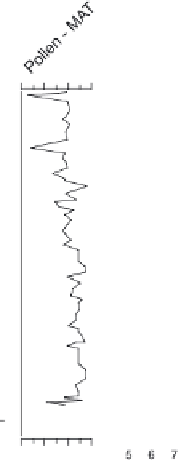
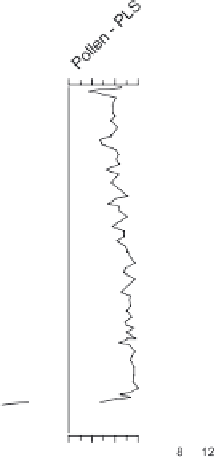

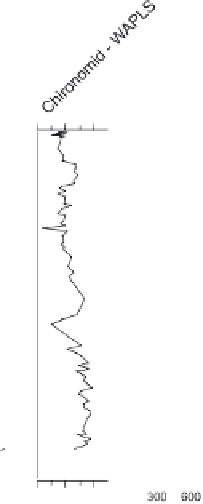


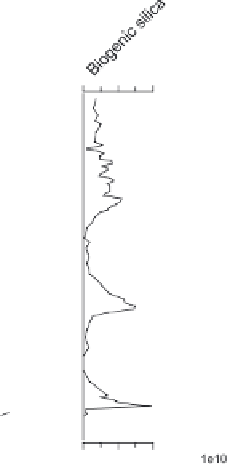
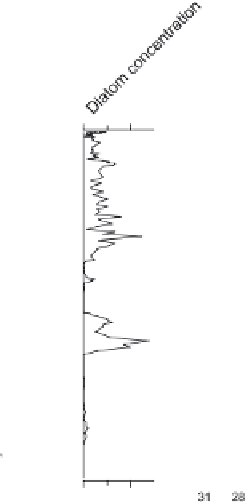
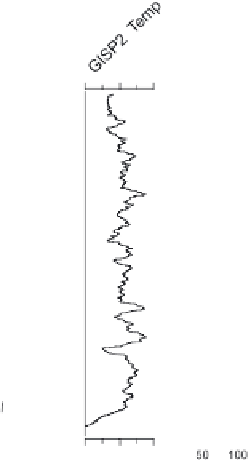


















































Search WWH ::

Custom Search